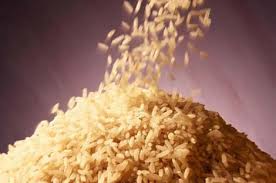BANGALORE: Will cheap rice boil? Let’s look at the math. Reducing the price from Rs 3 to Re 1 per kilo will help a family save Rs 60 per month. Till now, poor families got rice from the Public Distribution System (PDS) at Rs 3 per kilo or Rs 90 for 30 kilos. Under the new scheme, they will pay Rs 30. Significantly, the scheme will cost the state exchequer Rs 430 crore a month.
Already, the Mahatma Gandhi National Rural Employment Guarantee Scheme (MGNREGS) provides Rs 180 per day for at least 100 days of employment for each rural household. What add-on political leverage will the rice scheme provide? Or, along with MGNREGS, will it hurt employment?
Experts agree the scheme will have political benefits; few believe it can be sustained in the long term. It would adversely impact the labour market and have a cascading impact on various labour-intensive sectors, pushing prices upwards. Conversely, the welfare measure could help the needy and bring down foodgrain prices.
Political impact: The politics of rice has had its origins in C N Annadurai’s DMK government. Over the years, using rice to push a party has become a standard operating procedure. Now, rice is distributed free of cost in Tamil Nadu. When assembly elections were announced in the state earlier this year, no political party dared ignore rice populism. The BJP government gave every BPL family 20 kilo of rice at Rs 3 per kilo. The Congress has continued the game of one-upmanship. “It’s difficult to say if these things help boost electoral prospects; they do help politically,” says A Narayana, a member of the faculty at Azim Premji University.
“It’s time political parties moved towards sustainable politics instead of making people dependent. These gimmicks won’t yield much. Welfare politics has failed in Spain. As Prime Minister Manmohan Singh said, money does not grow on trees and, hence, politicians need to be pragmatic. After the polls, they are in the business of governance, not in the politics of governance,” says Harish Ramaswamy, professor at Karnatak University, Dharwad.
Exchequer impact: In 2011-12 the cost of subsidizing food was Rs 790 crores. This year, it is expected to be close to a staggering Rs 5,000 crores. To mop up revenue, the state government mooted the idea of introducing cheap liquor and licensing more liquor outlets but gave the idea a silent burial following widespread criticism. Chief minister Siddaramaiah says he will cut wasteful expenditure, including handouts to religious institutions and community organizations, plug loopholes in revenue collection, and widen the tax net.
R S Deshpande, director, Insitute for Social and Economic Change (ISEC), provides a welfare perspective: “It (cheap rice) makes a difference on the psyche of the poor as it acts as insurance. Although it may not run for long, it’s a good scheme with quite a few positive spin-offs. It will bring down the prices of foodgrains in the market. It won’t cost so much. The estimated expenditure of Rs 430 crore per month is a computed figure; the real figures won’t be that much.”
Social impact: Some commentators argue that the populist scheme will adversely impact the labour market and agricultural productivity. Although there are no studies to link decreased production to subsidies, in 2011-12 the growth of agriculture and allied sectors in the state was negative (-2.2%) and, in 2012-13, it was a mere 1.8%. The agriculture sector’s contribution to GSDP, which was just 16.1% in 2011-12, declined to 15.3% in 2012-13.
“Our studies and analyses have proved that consumption-based subsidies are cornered by the affordable more than the poor. The rice scheme didn’t succeed in Andhra Pradesh. This cannot be sustained for long. At best, it may stay for a year. Monetary and administrative constraints will pull it down,” says Amarnath H K, of National Institute of Public Finance and Policy, New Delhi.
The rice scheme may have overlooked food habits which vary across the state. “There is a non-rice standardization happening. People, especially in urban areas, prefer jowar, wheat and ragi. Jowar, which was once restricted to North Karnataka, has penetrated the south now,” says G K Karanth, a sociologist at ISEC.
A note of caution comes from within the Congress. “Subsidies are necessary but won’t solve the problem in the long term. I believe in long-term and sustainable solutions which empower people,” says agriculture minister Krishna Byregowda.

